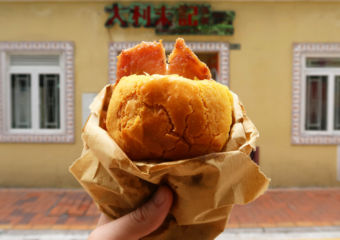Wu Guanzhong, A Canal in Shaoxing
Since its opening in 1963, the National Art Museum of China (NAMOC) in Beijing has collected some of the most important art works by modern Chinese artists. In 2017, they organized “Beauty in the New Era”, an exhibition that visitors queued up to see even during the freezing winter! Luckily for Macau art lovers, NAMOC has brought “Beauty in the New Era” to the Macao Museum of Art as a part of Art Macao and the 30th Macao Arts Festival. This is the perfect opportunity to learn more about great Chinese artists of the 20th century and what inspired them in the new era.
In search for a new direction
20th century in China was rich in historical events. After centuries of closed borders, the country started to open up to the world. The Republic of China replaced the failing imperial system causing a chain of dramatic developments in the country. In 1949, the People’s Republic of China was born.
Such fundamental changes always strongly affect both society and the art scene. How do we not forget traditions in the new era? How do we adapt? How do we interpret beauty in the modern context? To answer these questions, Liu Haisu, a prominent Chinese artist, created a manifesto of the Shanghai Academy of Fine Art. “First, we must develop the inherent art of the East while fully comprehending the essence of Western art. Second, we must shoulder the responsibility of promoting Chinese art’s revival in a cruel, ruthless, dull and desolate society”. This manifesto runs through the artworks of the exhibition like golden threads.
Initially resenting foreign influence, Chinese masters of the time soon realized that embracing European art traditions is the way to revive Chinese fine art. Most importantly, they fully understood the higher purpose of art–to serve society and shed the light of beauty on the unknown path of the new era.
“Beauty in the New Era” is divided into two sections called “Nourishing Chinese Art with Western Aesthetics” and “Innovating Tradition” to illustrate Liu Haisu’s manifesto and let the viewers explore the methods of 20th century master artists that include Qi Baishi, Zhang Daqian, Xu Beihong, Liu Haisu, Lin Fengmian, Fu Baoshi and Li Keran.
Nourishing Chinese Art with Western Aesthetics
This section showcases the works of masters who started implementing the new artistic techniques, thus modernizing classic Chinese art, as well as the works of contemporary artists who brought a new language into classic art, yet respecting traditional aesthetics.
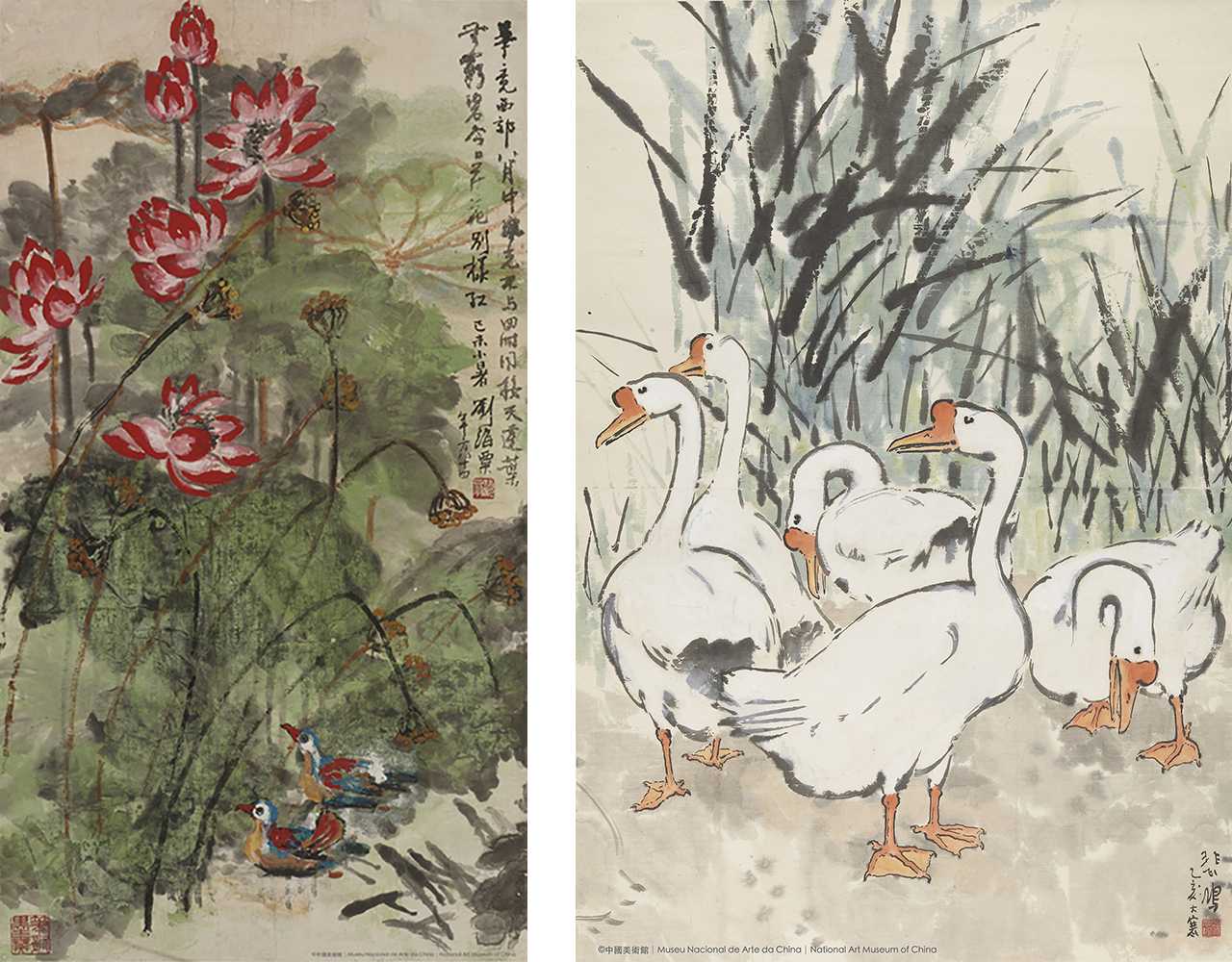
Liu Haisu, Mandarin Ducks and Red Lotus; Xu Beihong, Geese
Liu Haisu
Among the pioneers of modern art in China was Liu Haisu, one of the founders of the first modern fine arts school in the country and fathers of modern Chinese art. There, in the Shanghai School of Fine Arts, he promoted Western techniques, especially of Van Gogh and Cezanne, nude model and Plein air painting. Basically, he took the methods that revolutionized the European art world during the Renaissance (nude model) and Impressionism era (Plein air). His paintings, such as “Duck and Red Lotus Flowers” (see image above) is a combination of Chinese classic themes with what he learned in French art schools. These are bright colors, expressive brushstrokes and, most importantly, the artist’s “presence” in the painting. The symbolism inherent to Chinese art is still there, but a viewer can clearly see the artist’s unique signature, his personal vision.

Wu Zuoren, Ganzi Snow Mountain
Wu Zuoren
Another expert of the European art school is Wu Zuoren, famous for his nature scenery works. Studying in Shanghai, France and Belgium, Wu Zuoren practiced mainly mural and easel painting in a rather conservative academic style. When he returned back to the homeland, Wu realized that brilliant painting skills are meaningless if they are not used to serve his country. So he began to seek inspiration in native landscapes and chose the life of common people as his object of interest. Among his most famous series of works, is the ink paintings of herdsmen and camel caravans in West China.
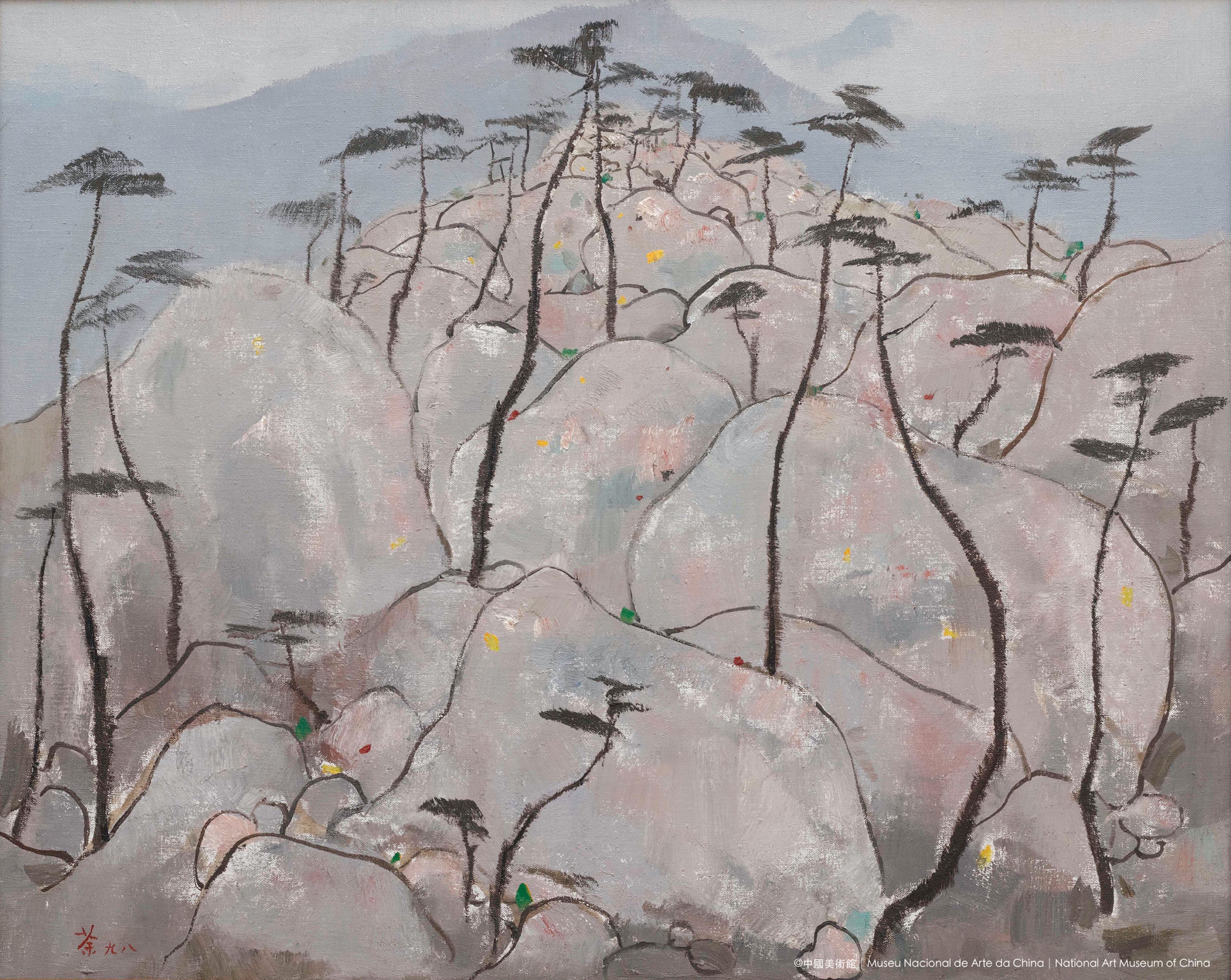
Wu Guanzhong, Pines and Rocks on the Lao Mountain
Wu Guanzhong
Like Wu Zuoren, Wu Guanzhong is also driven by patriotism and deep love for the motherland. One of the greatest contemporary Chinese painters, he loved portraying Chinese landscape and waterscapes. To transport this love to canvas, Wu Guanzhong used Chinese calligraphy, abstract patterns and expressive manner influenced by Fauvism. He admired European masters of the time such as Henri Matisse, Paul Cézanne, but especially Vincent van Gogh.
Innovating Tradition
The second exhibition hall is a celebration of the Chinese classic art revival. The artists presented here found their own innovative style of painting based on the profound knowledge of traditions. Life itself was the main inspiration, so nature is the main object of this aesthetic discipline. These artworks reflect the cultural essence of the Chinese people which is finding beauty in the world around us.

Qi Baishi, Flowers and Insects
Qi Baishi
An artist that seemed to always be on the hunt for inspiration, an attentive observer who paid close attention to nature and its beauty was Qi Baishi. His bronze statue graces the hall overlooking the paintings exhibited. He is known for modernizing the “gongbi” style (careful realist technique) of classical Chinese painting, but also for mastering “xieyi” (meaning “sketching thoughts” with interpretive freehand brush technique).
Many of his works are a combination of both styles where insects are painted in a fine-line, “gongbi” style, while plants are depicted in an expressive colorful manner of “xieyi”. This bold method of using opposite styles in one painting is Qi’s signature language that brought a new life to classic Chinese art. The “Insects and Plants” series is an excellent example of Qi Baishi’s mastery where meticulously painted realistic flies and bees are sitting on bright flowers made with freehand brushstrokes.
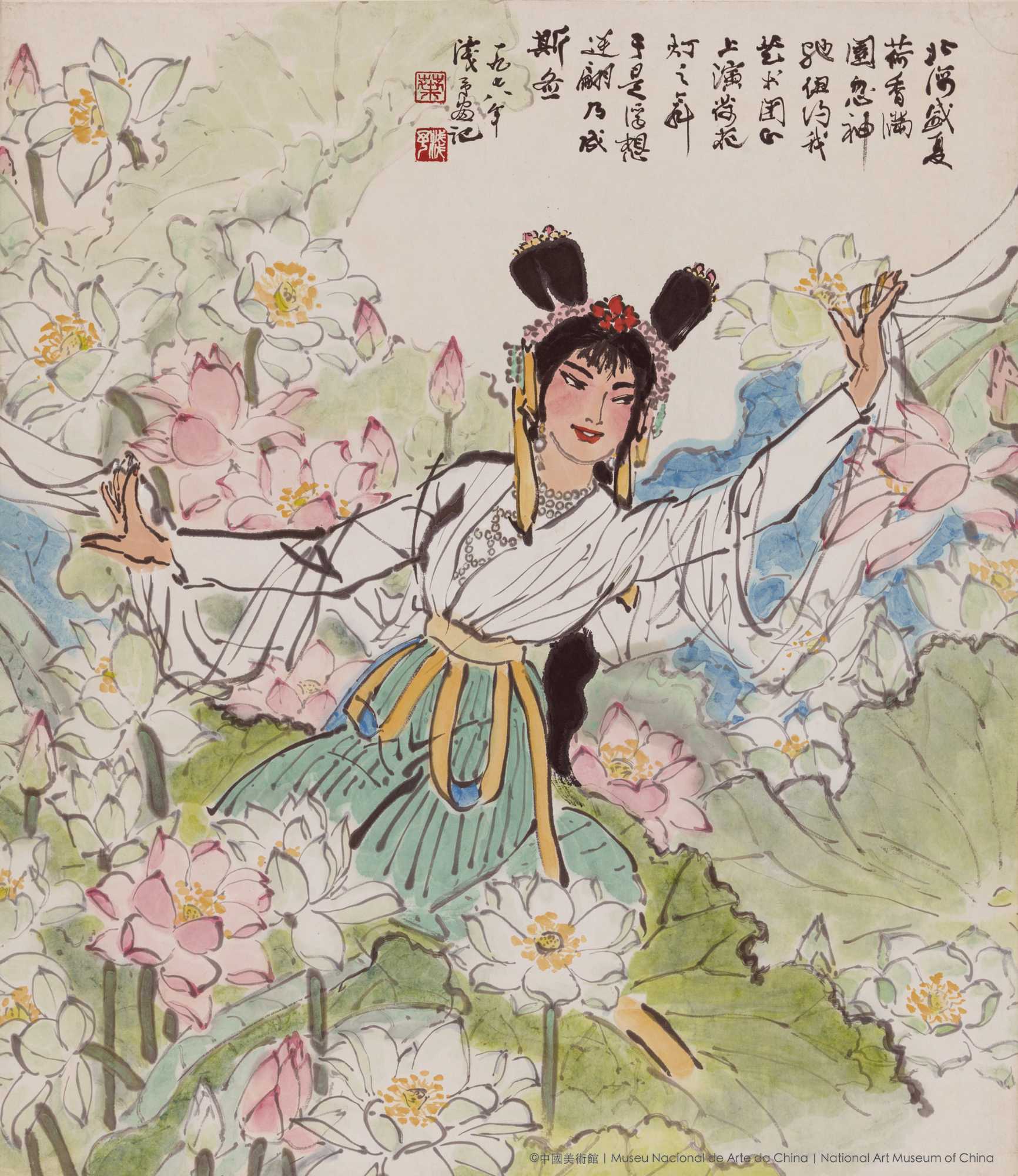
Ye Qianyu, Lotus Dance
Ye Qianyu
Known mainly as a caricaturist in his early career, Ye Qianyu focused on Chinese painting in the 1940s. Some of his most impressive works are the dancers series (Hindu Dance Bharatanatyam, Lotus Dance, Dance on the Plateau). Ye was fascinated by performers. Every line and brushstroke communicates the elegance of the dance moves. The more a viewer looks into his works depicting dance, the more they feel like they can anticipate the dancer’s next movement or step. This is how brilliantly Ye Qianyu depicted movement.
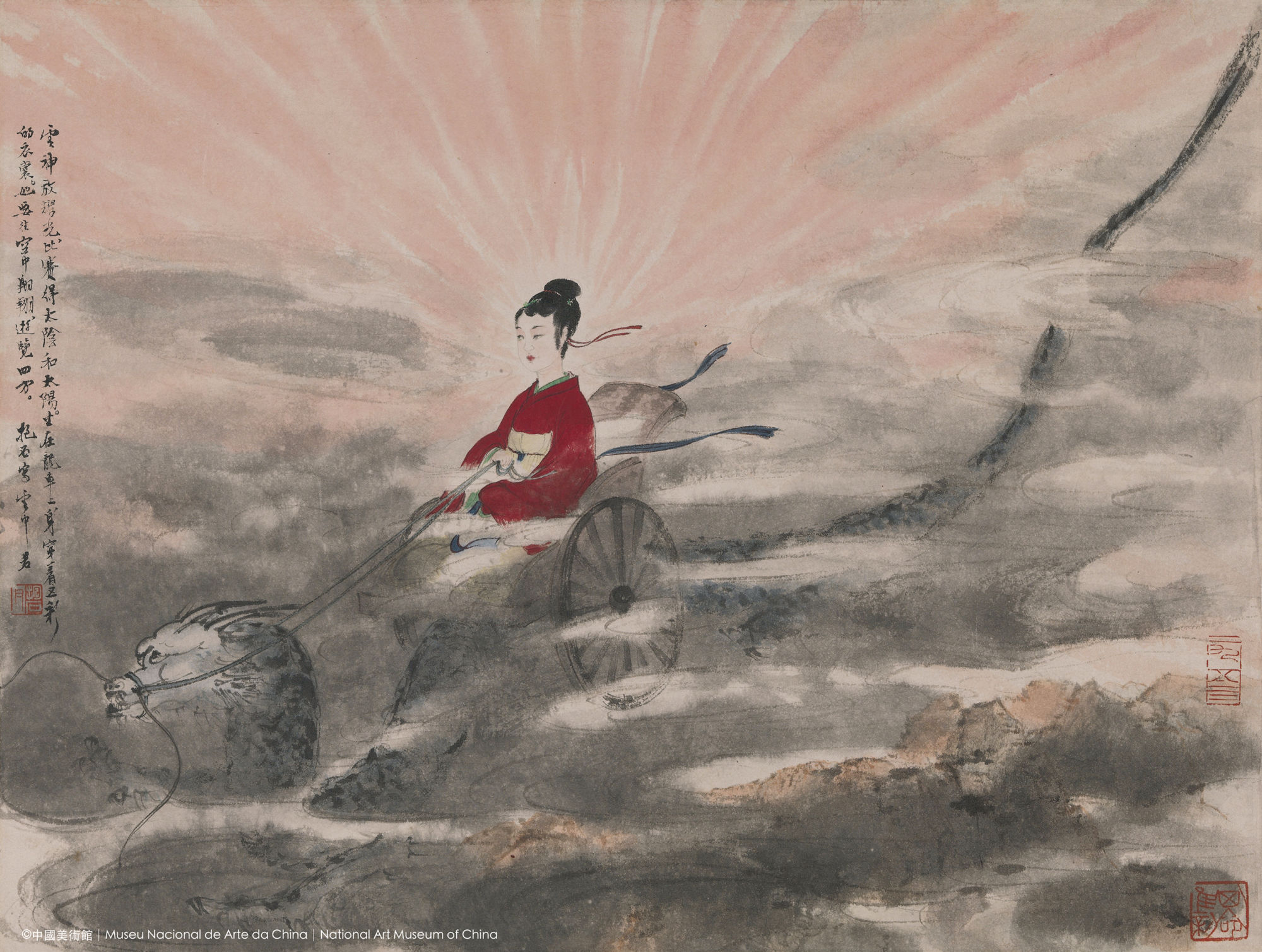
Fu Baoshi, Nine Songs
Fu Baoshi
Fu was a leader of New Chinese Painting Movement, a foundation that aimed to reform Chinese painting. An innovation of theirs included the development of the new brushstroke skill in which Fu excelled at. He developed his own signature brushwork, later named “Baoshi Cun”, splashed ink and brush rubbing across large areas. This method puts Fu Baoshi on the same line as abstract expressionists. Using this brushwork in his landscape paintings, he gave traditional landscape art a new vibrancy.
“Beauty in the New Era” Exhibition
When: 10:00am–7:00pm, Tuesdays–Sundays, May 4–July 28, 2019
Where: Macao Museum of Art, Avenida Xian Xing Hai, NAPE, Macau
How much: Free admission
For more information, call +853 8791 9814, email [email protected] or visit Art Macao’s website
“Beauty in the New Era” exhibition is part of the mega international art and cultural event Art Macao.
Happening from May to October this year, Art Macao brings together cultural institutions, hotel and resort operators, consular missions in Hong Kong and Macau to create an unforgettable atmosphere and cultural vitality to thrill residents and tourists alike.






